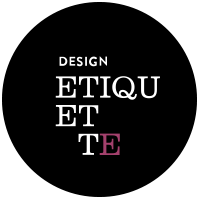Fantastic to work with. Mariana and her team were fantastic to work with. Responsive, understanding, and organized. Most importantly the quality of the work is exceptional. I am tremendously proud to be represented by the branding that Design Etiquette created for my business.
Brandon Chillingworth — Hacked BD
When To Rebrand
— When To Rebrand — When To Rebrand— When To Rebrand
Branding, Strategy, Business
Did you know that a rebrand can make or break your brand?
A brand redesign is a significant step. Here are some reasons why your business might need a rebrand or brand refresh:
1. Poorly Executed Brand Identity:
Maybe you didn’t invest in a high-quality brand identity from the start, or perhaps the designer or studio you worked with missed the mark. Now that your brand is more established and generating revenue, it might be time to hire a skilled professional to redesign your brand identity.
Ex: Starbucks
Starbucks’ logo was such an ugly baby that the company decided to simplify and modernize it in 1987, transforming the siren into a cleaner, less-detailed image. They also chose their famous green color to stand out in a market full of browns. This evolution helped Starbucks align with modern aesthetics and appeal to a broader audience.
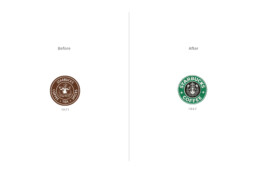
2. Outdated Brand Image:
Brand identities should be timeless, but if yours feels outdated, it’s time for a refresh to stay relevant and modern.
Ex: Firefox
Mozilla Firefox’s logo had been tweaked slightly over the years, but by 2019, the classic fox circling the globe began to look outdated, especially with the rise of flat design trends. The company rebranded with a more abstract, simplified version of the logo, retaining the essence of the fox but using bold, vibrant colors that better fit modern design aesthetics.
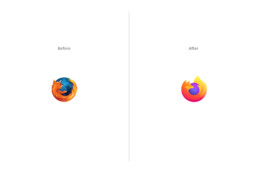
3. Expansion or Diversification:
If your business expands into new markets or offers new products/services, rebranding can help communicate these changes effectively.
Ex: Amazon
Amazon started in 1994 as an online bookstore, with a logo that reflected its focus on books. However, as the company expanded into selling a wide range of products—from electronics to groceries—and eventually evolved into a global e-commerce giant, a rebrand was necessary. In 2000, Amazon introduced its now-famous logo featuring an arrow curving from the “A” to the “Z,” symbolizing the company’s shift to selling “everything from A to Z.”, reflecting its growing product diversity.
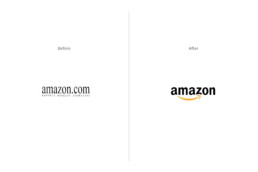
4. Mergers or Acquisitions:
After a merger or acquisition, rebranding can help unify the brand identity of the new business. This process goes beyond aesthetic changes, aiming to establish a new brand that resonates with customers, employees, and stakeholders.
Ex: Meta
Facebook rebranded as Meta in 2021 to signify its shift from being just a social media company to focusing on building the metaverse. This change unified the company’s different platforms (Facebook, Instagram, WhatsApp, etc.) under one new identity.
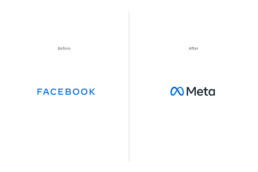
5. Negative Perception:
If your brand has faced negative publicity or has gained a bad reputation, rebranding can help rebuild trust and improve perception. It’s a dirty move, but someone’s gotta do it.
Ex: Uber
After facing negative publicity due to internal issues and public controversies, Uber rebranded in 2018 with a new, friendlier logo and visual identity.
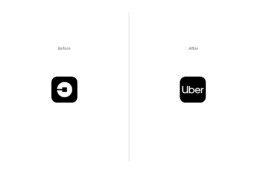
6. Innovation or Evolution:
As your business grows & adapts, there might be changes in your offerings or values.
Ex: Apple
Although Apple hasn’t drastically changed its logo, the brand has consistently refreshed its identity to match its evolution as a tech innovator. From the rainbow-colored apple to a sleeker monochrome design, the brand reflects modernity and cutting-edge innovation as it continues to grow.
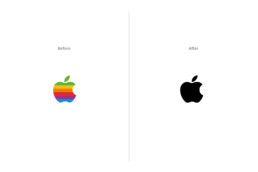
7. Changes in Name:
Whether you are changing your business name because it is difficult to pronounce, or because of Trademark conflict, a change in your brand identity is needed.
Ex: Kit
Recently, ConvertKit changed its name to simply ‘Kit,’ which I believe will benefit the brand immensely. The name change reflects their evolution from an email marketing tool into a broader creator-focused platform. Alongside the new name, they launched a refreshed brand identity that looks more modern and friendly, aligning perfectly with their mission to empower creators with simple and effective tools.
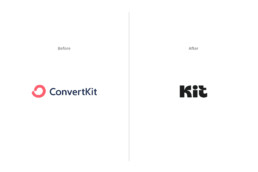
Is it time for your brand to evolve? Let’s explore how a fresh perspective can enhance your identity and impact.
Feel free to reach out if you’d like to discuss your brand’s evolution!
Fantastic to work with. Mariana and her team were fantastic to work with. Responsive, understanding, and organized. Most importantly the quality of the work is exceptional. I am tremendously proud to be represented by the branding that Design Etiquette created for my business.
Brandon Chillingworth — Hacked BD
5 Essential Layers Every Brand Needs
— 5 Essential Layers Every Brand Needs — 5 Essential Layers Every Brand Needs
Branding, Business, Strategy
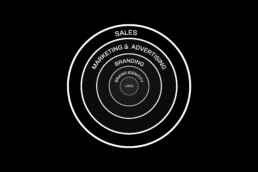
Imagine your brand as an onion, with each layer adding depth and flavor. At its core lies your logotype, its fundamental element. Every layer that surrounds this core will contribute different elements that, if done correctly, will help your brand succeed. Let’s dive into these layers.
1. Logo: The Tip of the Iceberg
Your logo is the visual cornerstone of your brand. It’s the first thing people see and the graphic element they associate with your business. While it’s just the tip of the iceberg, a well-designed logo is fundamental in initiating brand trust.
2. Brand Identity: Colors, Typography, Patterns, and More
Beyond the logo lies the broader spectrum of brand identity. This includes your brand’s colors, typography, patterns, and other visual elements like photography style. These elements work together to create a cohesive and memorable brand image that resonates with your audience.
3. Branding: Shaping Your Brand's Narrative
Branding is the process of crafting your brand’s story and identity. It includes your brand strategy, defining values, voice, personality, target audience, and market positioning. Additionally, branding extends to every touchpoint that shapes the brand experience, from how you communicate with customers to the sensory elements like smell, sight, and touch. Effective branding creates a strong emotional connection with your audience, turning them from customers to fans.
4. Marketing and Advertising: Amplifying Your Brand's Message
Once you’ve established your brand identity and strategy, it’s time to amplify your message through marketing and advertising. This includes strategies like content marketing, social media campaigns, and paid advertising, all aimed at reaching and engaging your target audience.
5. Sales: Converting Leads into Customers
The final layer of the brand-building process is sales. This is where all your branding and marketing efforts culminate in converting leads into customers. If your previous layers are well put together and you have a strong brand, the sales process can become smoother, as customers are already familiar and comfortable with your brand.
To finish this article, I’d like to point out the most crucial element, which I seem to have forgoten to mention: your product or service. While these 5 layers can help you attract more clients and build brand trust, if your offering isn’t top-notch, you might make a sale once, but that’s where it ends.
In conclusion, building a successful brand requires attention to each of these layers. From logo to marketing, to sales, each layer plays a crucial role in shaping your brand’s story and connecting with your audience. The more attention to detail and professionalism applied to each layer, the greater your brand’s chance of success.
What other aspects of brand management are you curious about?
Schedule a free discovery call today, and let’s talk about your business!
Fantastic to work with. Mariana and her team were fantastic to work with. Responsive, understanding, and organized. Most importantly the quality of the work is exceptional. I am tremendously proud to be represented by the branding that Design Etiquette created for my business.
Brandon Chillingworth — Hacked BD
The X-Factor in Branding: Your Brand Strategy
— The X-Factor in Branding: Your Brand Strategy — The X-Factor in Branding: Your Brand Strategy
Branding, Business, Strategy
When designing a brand identity, initiating the process with a brand strategy provides a clear path to develop the brand. It offers insights into color choices, helps determine the best typography to convey the brand’s personality, and guides the development of its copywriting, among other crucial elements. This strategy later serves as a guideline for the business to understand clearly how they could construct their communication, structure their marketing, and manage their brand.
Creating a brand strategy takes time for research and analysis, increasing the cost of a branding project. However, it is a must-have for brands that want to do things right from the start.
So what is a brand strategy?
It is a guideline that defines how your brand will establish its character, connect with its target audience, and differentiate itself in its market. A brand strategy lays the foundation for your brand identity. It includes elements like:
It is a guideline that defines how your brand will establish its character, connect with its target audience, and differentiate itself in its market. A brand strategy lays the foundation for your brand identity. It includes elements like:
Brand Purpose
Why does your brand exist? Brand purpose is the underlying reason for a brand’s existence beyond just making a profit: making a positive impact on society, addressing a higher goal, or contributing to a cause. It focuses on the positive influence your brand will have in the world.
Take for example a brand like Patagonia. Its purpose goes beyond selling outdoor clothing and gear. The company is known for its commitment to sustainability and social responsibility. Patagonia actively works to reduce its environmental impact, promotes fair labor practices, and donates a percentage of its profits to environmental causes. Additionally, they encourage their workers to go outside and enjoy nature, fostering a connection between their employees and the values they uphold.
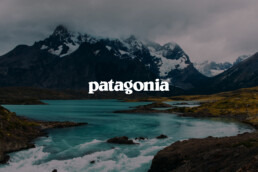
Brand Voice
The ‘tone & voice’ of a brand refer to the consistent style and manner in which a brand communicates its messages. The tone represents the emotional expression in the brand’s communication: friendly, formal, playful, while the voice is the distinctive way in which a brand speaks: conversational, informative, humorous, or serious.
Think about Nike, and how its brand is characterized by a motivational and empowering tone. The company communicates with a bold and inspirational voice, encouraging individuals to push their limits and strive for greatness. Their communication often features strong, dynamic language that revolves around concepts of sportsmanship, determination, and achievement.

Brand Values
Brand values are the fundamental beliefs and principles that guide a brand’s decisions and interactions. They represent the core ideals and ethical standards that a brand adheres to, shaping its identity and influencing how it engages with its audience and market.
Apple is known for several core values that shape its brand identity. Starting with “Innovation”, Apple strives to create cutting-edge products that set trends in technology. Then we might add “Simplicity” for their user-friendly designs and intuitive interfaces. And include “Design Excellence”, since the brand places a high value on design aesthetics and aims for an incredible visual appeal in their products.

Brand Story
A brand story is a narrative that includes the essence of a brand, its history, values, and purpose, often mixing together elements of the brand’s journey, mission, and unique characteristics to create a memorable and engaging account that will be remembered by your audience.
The Airbnb brand’s story is one of connection and the feeling of being at home. The company started with the idea of creating a network of hosts and travelers who shared a love for travel, by offering a platform for individuals to rent their homes. Airbnb fosters a sense of community and cultural exchange.

When creating a brand identity, initiating the process with a well-defined brand strategy provides a clear roadmap, ensuring your brand’s direction aligns seamlessly with all its elements.
Schedule a free discovery call today, and let’s talk about your business!
Fantastic to work with. Mariana and her team were fantastic to work with. Responsive, understanding, and organized. Most importantly the quality of the work is exceptional. I am tremendously proud to be represented by the branding that Design Etiquette created for my business.
Brandon Chillingworth — Hacked BD
Color Psychology in Brand Identity
— Color Psychology in Brand Identity — Color Psychology in Brand Identity
Branding, Business, Strategy
Exploring The Subconscious Influence of Color in Branding
Color is one of the most important elements in branding. Colors mean different things to different people, playing an important role in shaping every brand’s identity and influencing how your business will be perceived in the future. A deep red, for instance, may not feel as sophisticated as a dark black, and a navy blue will never be as friendly and cheerful as a sunny yellow.
However, it’s crucial to consider the cultural context of your brand when choosing colors. Take red, for example: in Western cultures, it’s often linked to passion, love, and danger, whereas in Chinese culture, it represents good luck, happiness, and prosperity.
Imagine if iconic brands swapped their signature colors – Coca-Cola in green would just feel off, and Apple wouldn’t have the same sleek appeal in neon hues.
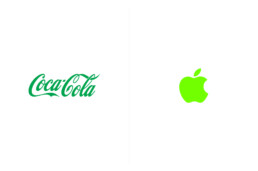
Established brands often lean on color traditions within their industry. Consider McDonald’s with its iconic red and yellow theme, a color combination that’s become synonymous with fast food worldwide. But then there’s Starbucks, boldly breaking the mold with its signature green, a stark contrast to the typical browns and blacks of traditional coffee shops. The choice to blend in or stand out with your color palette isn’t a matter of right or wrong. It’s a strategic decision, a crucial piece of the branding puzzle that needs careful consideration right from the start.
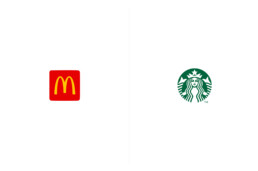
In my opinion, picking the right colors for a brand is super underrated. It’s tough, really tough. Even for pro brand designers, getting those colors just right is a bit of a juggling act. And if you’re new to this? Well, you’re probably going to spill the milk a few times before you get it right. Do designers and brand owners really sweat over this stuff as much as they should? They definitely ought to, because a brand’s color palette can make or break a brand.
Taking some advice from Gary Vaynerchuk’s book ‘Jab, Jab, Jab, Right Hook’, it’s all about giving your audience valuable information. As he says, ‘Give value. Give value. Give value. And then ask for business.’ So, here’s my two cents on how colors work in different industries and their meanings in society’s collective perception. When picking your brand’s colors, choose to go with a color palette that’s similar to other businesses within your niche, or choose a different route altogether, but choose wisely—your colors are a big part of your brand’s story.
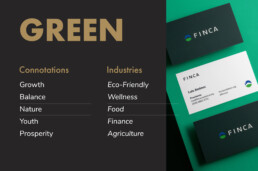
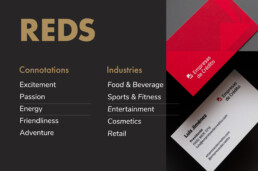
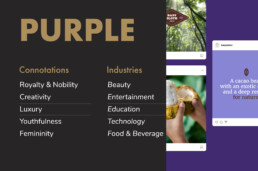
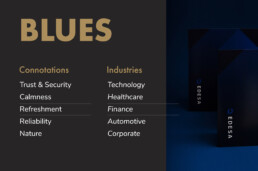
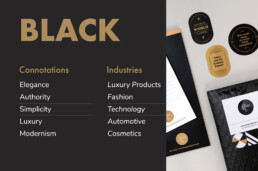
<strong><a href=”https://www.designetiquette.com/book-a-call/”>Schedule a free discovery call today, and let’s talk about your business!</a></strong>
